Cats and closed doors are often mystifying and frustrating for many pet owners. Cats, by nature, are curious creatures who thrive on freedom and control over their environment. A closed door represents a barrier to exploration and a challenge to their autonomy, which can be distressing or even anxiety-inducing for them. Additionally, cats are territorial animals who dislike having access restricted to different parts of their home. This can lead to behaviors like scratching, cat meowing, or pawing at the door to regain control or access.
In this post, I will share why closed doors can be so problematic for cats and provide strategies to help mitigate this stress, ensuring a happier, more peaceful coexistence. Whether it is a closed bathroom door or a bedroom door, I will help decode this cat's behavior.
5 Reasons Why Cats Hate Closed Doors
Territoriality and Social Nature
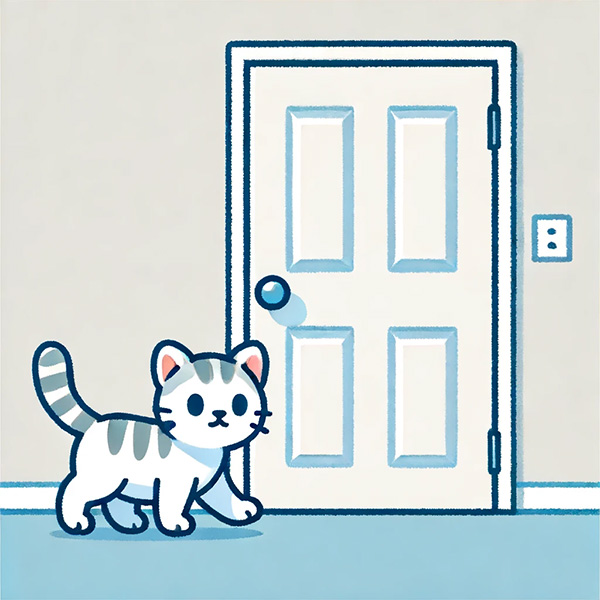
Cats' deep-rooted territorial instincts are a primary reason why they often dislike closed doors. In the wild, a cat's territory is paramount; it not only signifies a safe space but is also a crucial element in their natural behavior for hunting and mating.
Even in a home environment, these instincts remain highly active. Closed doors disrupt their controlled environment, blocking access to different parts of their home that they consider their territory. This can lead to stress as the cat feels their ability to control and monitor their environment is compromised.
The stress can manifest in various behaviors, such as scratching at doors, vocalizing displeasure, or even displaying signs of anxiety. Allowing a cat to have free access to different areas in the home can help alleviate this stress by aligning with their instinctual need for control over their territory.
Solution
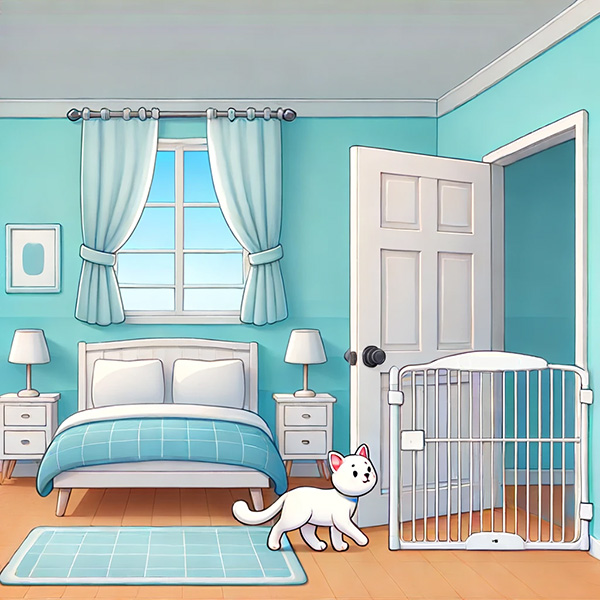
Provide Access: If possible, allow your cat to access more areas of the home. Installing pet-safe gates or doors with cat flaps can help maintain their sense of control without compromising certain areas' security.
Maintain Visibility and Interaction: Use glass doors or doors with windows to help maintain visual contact. This can alleviate feelings of isolation and foster a stronger sense of connection for your cat with the rest of the household.
Environmental Enrichment: Place cat trees, cat shelves, and toys near doors or along the pathways your cat frequents. This enrichment can divert your cat's attention from the doors themselves and satisfy its need to explore and monitor its environment.
Routine and Inclusion: Keep your cat involved in family activities. To reinforce their social bonds and reduce anxiety, try to maintain a routine that includes regular playtime and interaction, especially near areas with closed doors.
Pheromone Diffusers: To create a calming environment, consider using pheromone diffusers near closed doors. These diffusers replicate natural cat pheromones, aiding in stress reduction and fostering feelings of comfort.
Curiosity and Fear of Missing Out (FOMO)
Cats' natural curiosity and fear of missing out are significant factors behind their aversion to closed doors. As innately curious creatures, cats are driven to explore their surroundings to understand their environment and assess any changes. A closed door represents an unknown, unexplored territory that could potentially hold new and exciting discoveries or essential resources like food or a comfortable resting area. This triggers a strong desire to access what lies beyond.
Moreover, cats fear missing out on social interactions or activities happening around them, which could explain their restlessness when isolated. Being social animals, particularly with their human family, they seek to be involved in daily activities, fearing that separation might mean missing out on attention, protection, or food. Addressing these instincts by providing enrichment through toys and regular interaction and occasionally allowing supervised exploration of new areas can help mitigate their anxiety towards closed doors.
Solution
Visual Access: Consider installing pet gates or doors with lower windows to allow your cat to see through to other areas. This helps satisfy their curiosity without needing to open the door.
Regular Exploration: Supervise your cat as it explores various areas of your home. This can help mitigate their fear of missing out on interesting or important events in other parts of the house.
Interactive Play: Involve your cat in interactive play sessions across various rooms. This will help reduce their curiosity about unexplored or restricted areas and provide mental and physical stimulation.
Environmental Enrichment: Enhance your cat’s environment with engaging toys, puzzle slow feeders, and scratching posts in various areas, including near closed doors. This enrichment can divert your cat's attention from the frustration of closed doors and reduce FOMO by keeping it occupied and entertained.
Separation Anxiety
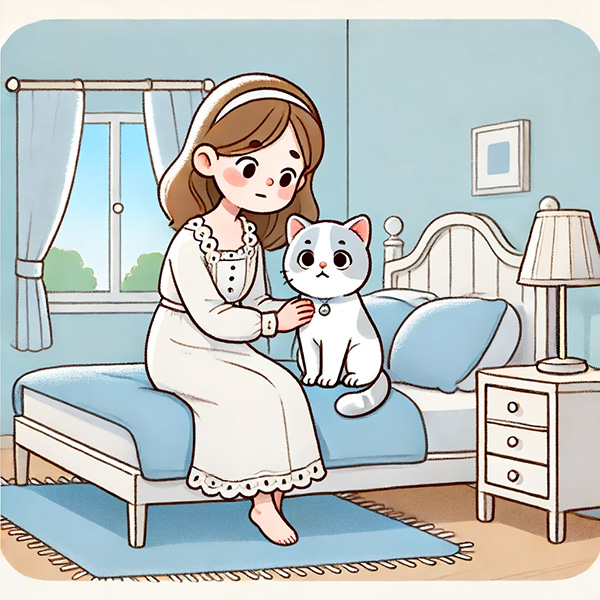
Similar to dogs, cats can develop separation anxiety. Being isolated from family members by a closed door can lead to stress and anxiety. Cats hate closed doors stems significantly from their social nature, particularly in relation to their human family members. Despite their reputation for independence, many cats form strong bonds with their cat owner and feel more secure when they have visual or physical access to them.
Closed doors can disrupt this access, making cats feel isolated or excluded, leading to stress and anxiety. This anxiety can manifest as persistent cat meows, scratching at the door, or even sitting for long periods by the door, hoping for it to open. These behaviors are not just attempts to regain entry but also signal their desire to maintain social contact and assurance of their safety and inclusion in the family group. Recognizing these needs and ensuring your cat feels included can help mitigate the stress associated with the door closed.
Solution
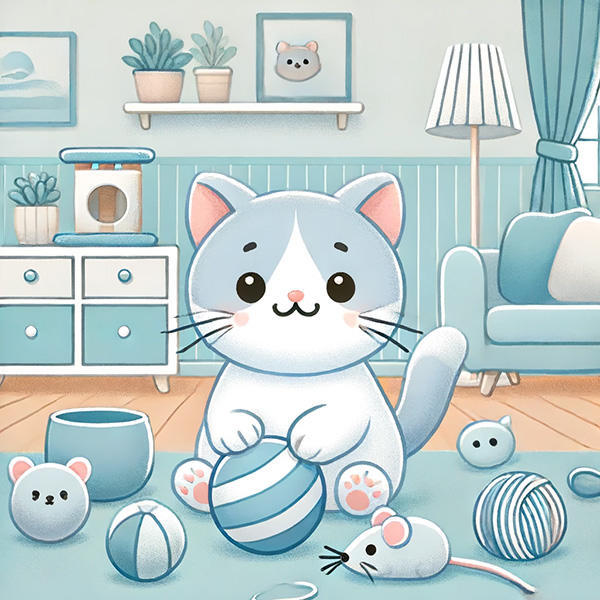
Gradual Desensitization: Gradually accustom your cat to solitude by initially leaving them alone for short intervals and then gradually extending the duration. This approach can aid in their adaptation to the concept of being apart.
Environmental Enrichment: Make sure your cat has ample toys, scratching posts, and maybe even a window perch to keep it entertained while it is alone. Puzzle feeders can also provide mental stimulation and keep it engaged.
Comfortable Space: Create a comforting environment in the area where your cat spends time alone. Include items with your scent, such as worn clothes, cozy bedding, and familiar toys.
Pheromone Diffusers: Consider using pheromone diffusers like Feliway. These mimic the calming pheromones cats produce naturally and can help reduce anxiety.
Consistent Routine: Cats flourish with routine, so maintaining a consistent schedule for feeding, playtime, and interaction can help alleviate anxiety by offering a predictable environment.
Professional Help: If your cat's anxiety is significant, seeking advice from a veterinarian or a pet behaviorist may be essential. They can offer personalized guidance for your unique situation and, if necessary, prescribe medications to alleviate anxiety.
Discomfort with Confinement
Cats' dislike of closed doors often stems from their discomfort with confinement. Naturally, cats value freedom and the ability to roam and explore. Closed doors can create a restrictive psychological barrier, trapping them in or excluding them from other parts of their environment. This restriction goes against their instinctual need for control over their territory, leading to stress and discomfort.
The discomfort is physical and psychological, as confinement can make cats feel vulnerable or anxious, unable to escape or hide if they perceive a threat. Such stress can lead to behavioral changes, including increased vocalization, restlessness, or attempts to escape.
To help alleviate this discomfort, providing cats with a stimulating environment within their accessible area can be beneficial. This includes multiple hiding spots, vertical spaces, and interactive toys to engage their senses, helping them feel more in control and less confined.
Solution
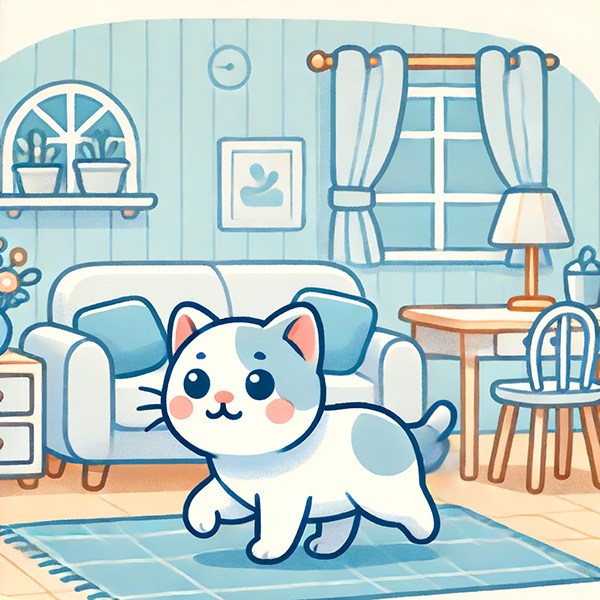
Create an Enriched Environment: Ensure your cat has access to various stimuli, such as window perches, cat trees, and interactive toys that can be used independently. This helps satisfy their exploration needs even within confined spaces.
Allow Controlled Access: If possible, allow your cat access to more areas of the home under supervision. Gradually introducing new spaces can help reduce the stress associated with closed doors.
Use Visual Aids: Sometimes, simply allowing a cat to see beyond a closed door can help. Installing a small pet-friendly window in the door or using gates designed for pets that allow visibility and smell but restrict access can ease their anxiety.
Behavioral Training: Train your cat to associate closed doors with positive experiences. You can feed them treats near closed doors or play with them to create positive associations.
Learned Behavior
Cats hating closed doors can often be a learned behavior, reinforced by their experiences and interactions with their environment. If a cat has previously had positive experiences behind a closed door, such as accessing food, a favorite sleeping spot, or social interactions with family members, they may learn to associate closed doors with these rewards.
Consequently, they might persistently scratch or cat meow at closed doors in anticipation of similar positive outcomes. If a cat has had negative experiences, such as being isolated or scared behind a closed door, this too can lead to a learned aversion, where the cat seeks to avoid being confined again.
Understanding these learned behaviors can help cat owners address the root causes by reconditioning their cat's associations with closed doors using positive reinforcement or minimizing negative experiences to alleviate anxiety and stress.
Solution
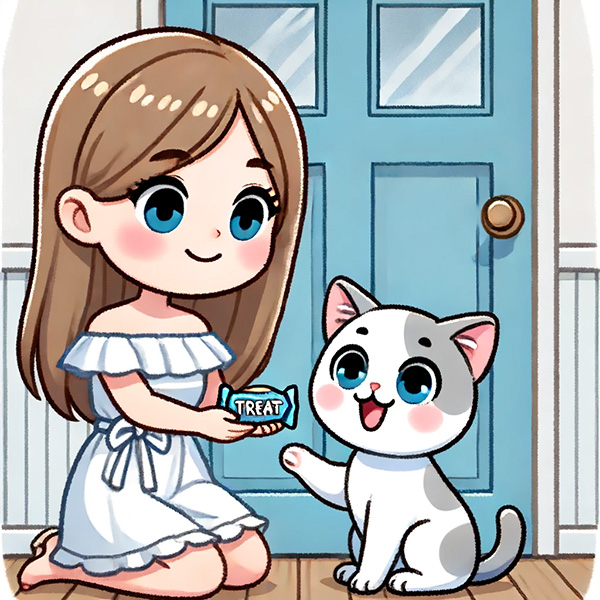
Positive Reinforcement: Whenever your cat behaves calmly near a closed door, reward them with treats or affection. This helps to create a positive association with closed doors rather than negative ones.
Gradual Desensitization: Slowly acclimate your cat to closed doors. Begin by briefly closing doors while remaining visible, gradually extending the duration as your cat grows more at ease.
Provide Alternatives: Ensure that your cat has everything they need—such as food, water, a litter box, and comfortable resting areas—on both sides of frequently closed doors. This reduces any potential anxiety about being restricted from essential resources.
Engage and Distract: When you need to close a door, provide a distraction, such as a new toy or a puzzle feeder. This redirects your cat's focus from the closed door to an engaging activity.
